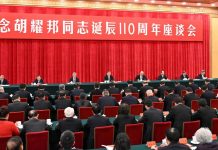BEIJING: China is now home to over 200 million skilled workers, accounting for approximately one-seventh of its total population. During the 14th Five-Year Plan period (2021-2025), these workers have played an essential role in driving China’s economic and social progress, supported by the country’s proactive talent development policies.
“My skills are certified by both my employers and the state — making them highly marketable and my career path clear,” said Huang Nuola, a garment quality inspector from south China’s Guangdong Province.
Huang is one of many who have benefited from an industry-oriented training system.
Across Guangdong, local authorities have invited major enterprises to participate in skills training and qualification programs, ensuring the training is aligned with employers’ needs — and about 130,000 workers from more than 800 companies have taken part in such enterprise-tailored programs.
Guangdong exemplifies what is a broader national effort — with 2,440 public technical schools and nearly 29,000 private training institutions complementing one another nationwide to provide training services across a wide range of sectors.
In addition to diverse training providers, China has been providing subsidies to eligible trainees to encourage skills upgrading. Official data show that since 2021, over 92 million workers, including 30 million migrant workers — have received such financial support for skills training.
To this end, the Ministry of Human Resources and Social Security (MHRSS) has announced that it will continue advancing a campaign to enhance workers’ professional skills and establish a high-quality, lifelong and employment-oriented technical training system.
AMPLE CAREER OPPORTUNITIES
“With the new professional title system, the career glass ceiling I once faced has been broken. The increased salary also boosted morale,” said Li Yanxu, a “special-level” technician from central China’s Henan Province.
In 2022, China released a guideline which set up a new professional title system featuring eight technical titles — three more than the previous five-tier system. This reform not only expanded the hierarchy of titles but also restructured related institutional mechanisms involving employment, compensation and promotion. Companies are encouraged to offer higher pay to workers with advanced professional skills. –The Daily Mail-CGTN news exchange item





